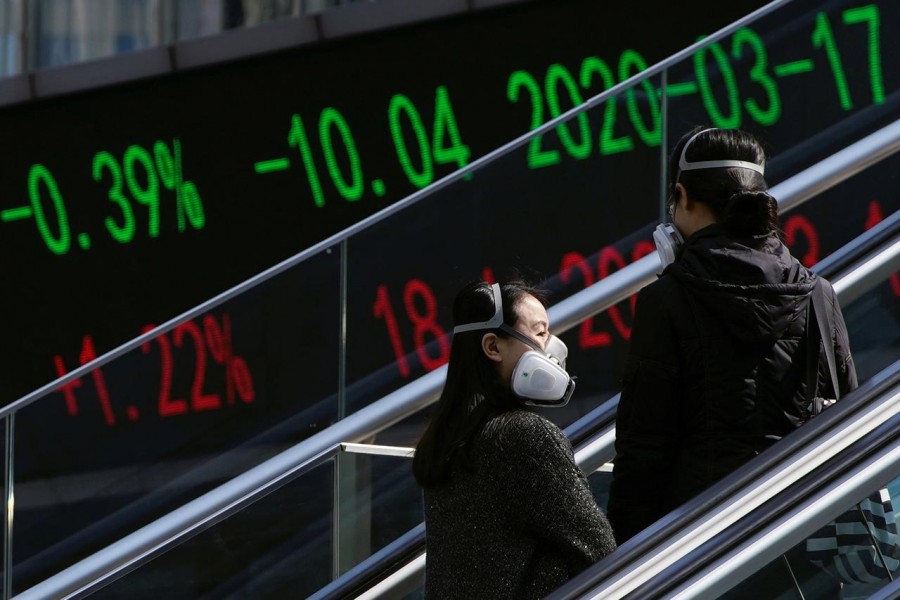Most Asian shares fell on Tuesday a day after Wall Street’s historic market rout, with fleeting initial gains evaporating as the coronavirus remained a major risk to economic growth.
MSCI's broadest index of Asia-Pacific shares outside Japan .MIAPJ0000PUS gave up early gains to trade 0.43 per cent lower. Japan's Nikkei stock index .N225 slid 2.79 per cent and South Korea's KOSPI .KS11 was off 3.2 per cent. Australian shares were up 0.5 per cent although this followed a massive plunge of almost 10 per cent on Monday.
US stock futures ESc1 rose 1.1 6 per cent early in Asian trading, but these gains were not enough to ease investor concern about the continuous spread of the flu-like virus.
“It’s no surprise that we’re seeing a bounce (in US stock futures) after the big falls on Monday,” said Michael McCarthy, chief market strategist at CMC Markets in Sydney.
“However, the situation continues to deteriorate on the economic front because of the virus.”
Gold, which is normally bought as a safe-haven, extended declines on Tuesday as some investors chose to sell whatever they could to keep their money in cash.
Oil futures rebounded in Asia, but downside risks remain due to an expected slump in global energy demand and Saudi Arabia’s plans to increase crude output to expand its market share.
The US Federal Reserve stunned investors with another emergency rate cut on Sunday, prompting other central banks to ease policy in the biggest coordinated response since the global financial crisis more than a decade ago.
Investors, however, are worried that central banks may have spent all their ammunition and that more draconian restrictions on personal movement are necessary to contain the global coronavirus outbreak.
Financial markets cratered on Monday. The S&P 500 .SPX tumbled 12 per cent, its biggest drop since "Black Monday" three decades ago, despite the Fed's surprise move late Sunday to cut interest rates to near zero, its second emergency interest rate cut in less than two weeks.
Some $2.69 trillion in market value was wiped from the S&P 500 as it suffered its third-largest daily percentage decline on record. Over the past 18 days, the benchmark index has lost $8.28 trillion.
Traders are looking ahead to data due later on Tuesday, which is forecast to show German investor sentiment tumbled in March.
The United States will also release retail sales and industrial production for February, which is unlikely to reflect the impact of the coronavirus.
Some investors say markets will not settle unless the US government announces a big fiscal spending package to match the Fed’s bold actions to slash rates and keep credit markets functioning.
Others say liquidity in some financial markets is starting to fall because there’s such a high degree of uncertainty, meaning even some traditional safe-havens may not be that safe.
Spot gold XAU= fell 0.29per cent to $1,509.50 per ounce.
In the currency market, the Swiss franc CHF=EBS, another safe haven, was little changed at 0.9470 per dollar as traders pondered policymakers next moves.
The dollar rose 0.3 per cent to at 106.35 yen JPY=EBS, recovering slightly from a 2.0 per cent decline from the previous session as the Fed's rate rippled through financial markets.
US crude CLc1 ticked up 1.88 per cent to $29.24, but even this bounce is likely to be temporary.
Saudi Aramco reiterated on Monday plans to boost output to record levels. Top global oil producers Saudi Arabia and Russia started a price war after failing to agree on a plan to curb supply.
The coming flood of supply from Saudi Arabia and other producers could result in the largest surplus of crude in history, said global information provider HIS Markit.


